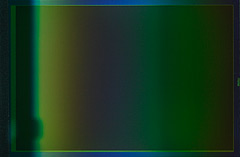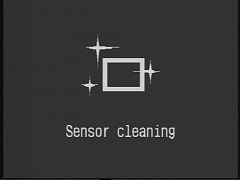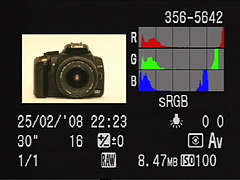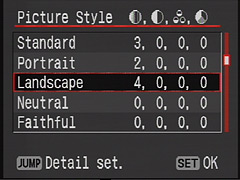








AdrianWarren.com: Reviews: Canon EOS 400D
|
|
| The EOS 400D features a new Canon CMOS sensor design; in line with the previous consumer models it's still APS-C (22.2mm x 14.8mm), but the resolution increases from 8.2MP to 10.1MP. Whilst that sounds like a significant jump, in reality it doesn't increase the resolution by a large margin over its predecessor. The width goes up by 432 pixels, the height by just 288 pixels. | This is the first Canon camera to feature a built-in dust removal system. The Canon Integrated Cleaning System (ICS) works by shaking a filter in front of the sensor, and can be set to run at start-up and shutdown; or if you prefer it can be disabled via the menu system. Additionally you can now digitally subtract a dust map if you shoot RAW and use Canon Digital Photo Professional to convert the files. |
|
|
| There's a new 9-point Autofocus system for the new model; inherited from its big brother the 30D. In addition to two extra AF points, and faster AF, four of the points are now in the perfect place for use with the "rule of thirds". | The buffering and write performance on the EOS 400D has been significantly improved, which means that you can now shoot continuous bursts nearly twice as long compared to the EOS 350D. |
|
|
| The main screen of the EOS 400D is significantly improved due to an increase in size from 1.8" to 2.5" and an increase in resolution from 115,000 pixels to 230,000, but the secondary status display has been removed. The larger screen now also features a sensor to turn off the display when you bring the camera up to your face. | In addition to brightness histograms, the EOS 400D now supports RGB histograms as well, which can very useful if you're shooting brightly coloured objects. |
|
|
| On the EOS 350D pressing the shutter release dismissed on screen selections without making the change selected, unless you remembered to press the Set button first. This behaviour has been changed on the EOS 400D; now when you select (say) a different ISO, that setting is used automatically as soon as it's selected on screen. | New feature to the Digital Rebel family, the EOS 400D sees the introduction of Picture Styles which are now standard across the entire current Canon dSLR range. Think of them as a digital equivalent of changing your film if you're shooting in JPEG. For example, the Landscape picture style boosts blues/greens and adds a little more contrast; so in some ways it's reminiscent of Fuji's Velvia slide film . |
